Comfrey as Feed
& Fodder for Livestock
Pigs, Cattle, Goats, Sheep, Horses, Rabbits
Comfrey
Easy Order Page
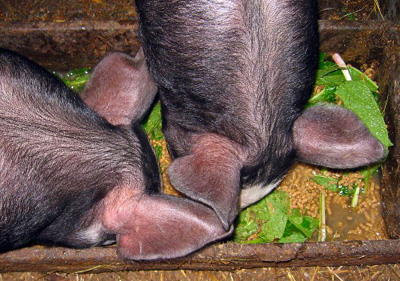
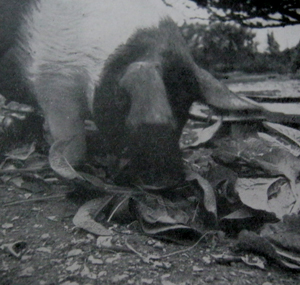
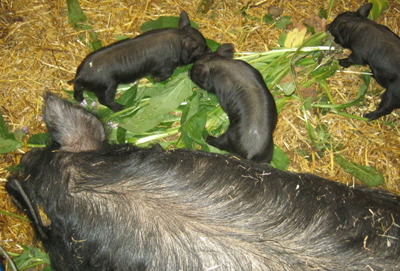
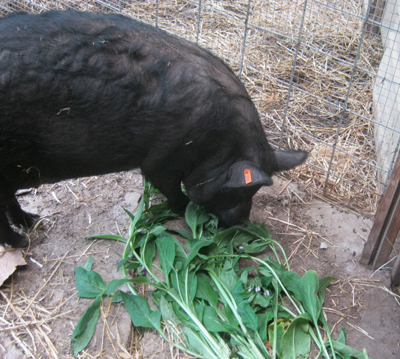
|
Hogs
Enjoy Comfrey
"Every
writer since 1810 has stressed the real pleasure pigs have in eating Comfrey:
there is never any question of wilting or getting them used to it by degrees,
and one has only to offer a troughful."
"The late Kenneth Crawley fattened pigs on Comfrey. He states that one can
feed it ad lib and save half the normal meal." (Kenneth Crawley researched
and promoted comfrey in the 1930s to 1943. 'Ad lib' means to give as much
and as often as they desire.)
"The best small scale application is for breeders, who feed after farrowing
as a supplement to normal rations, increasing the quantity as piglets take
to it. This takes the strain of a large litter off her milk. It removes
the scour risk from both sow and litter."
"The economics of pig-keeping vary with non-agricultural factors, but it
is unlikely that the prices of concentrated feeding-stuffs will fall, and
their supply depends on political circumstances, in their widest sense."
("Russian Comfrey" by Lawrence Hills.)
The first photo is swine eating comfrey and grain in a trough.
The second photo:
"The wide ratio of protein to fibre fits this comfrey crop to the pigs
digestion, and they not only eat every bit of the foliage they can get,
they will destroy the crop utterly by rooting if they are folded (grazed)
on it. It is both a meal saver and a scour (diarrhea) preventer, and pigs
are the most profitable stock to use."
-Report on Quaker Comfrey (Symphytum Peregrinum), Number One, The 1954 Research
Results by Lawrence D. Hills.
Published 1955 by The Henry Doubleday Research Association, Bocking, Braintree, Essex, England.
"Report on Quaker Comfrey" pdf at Archive.org
|
|
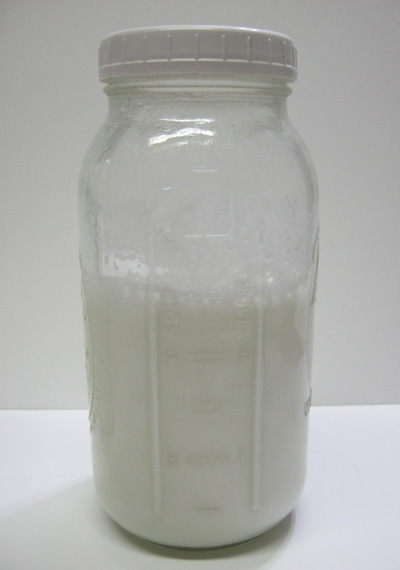
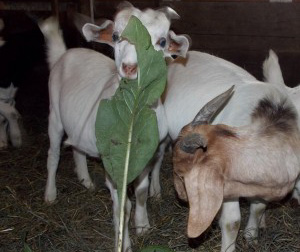
|
Great
for Dairy Animals
Comfrey is
especially good for animals you are milking. It gives does, cows and ewes
a nutritional boost. You can even dry it and then feed it to your animals
in the winter.
Some people say it improves milk production and increases the amount of
cream in the milk (from the protein probably). Of course, feed all food
supplements in moderation. Variety is always best.
"Goat-keepers have always been the most successful small-scale Comfrey growers.
Though the modern milking goat is as productive in proportion to body weight
as a Jersey cow, this yield cannot be secured on roughage."
"Goats will graze Comfrey; they may need a few trial feeds of the wilted
material but in general they take to it unwilted. Its role should be that
of a low-labour-cost 'concentrate' to balance the maintenance ration from
poor grass and roughage."
("Russian Comfrey: A Hundred Tons an Acre of Stock Feed or
Compost for Farm, Garden or Small-Holding" written in 1953 by Lawrence D.
Hills.)
This photo is a jar of raw goat milk from my Toggenburg does.
|
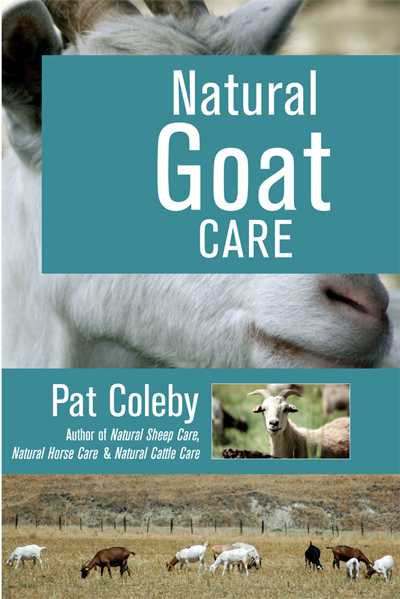 |
"Natural Goat Care" Book
"In spite
of much publicity to the contrary, comfrey is completely safe both internally
and externally. In many parts of Germany and also Japan, comfrey is used
exclusively for dairy cattle fodder during the summer months as it is highly
nutritious."
"Comfrey is also of great assistance when used internally or
topically for bone problems, including breaks."
"It is one of the few plants that contains natural vitamin B12."
"Comfrey may be used in poultices and will often reduce bony swellings in
a matter of days. It may be made into an ointment or used as a liquid obtain
by boiling the leaves. Distilled Comfrey
is the best source of the plant. All forms are useful
at some time or other."
"The plant also has a reputation as an inhibitor of cancer. Like many plants it has a poison (in this case an alkaloid) constituent which if separated from the plant could be dangerous, however fed as a plant it is safe."
From "Natural Goat Care" by Pat Coleby, page 189.
|
|
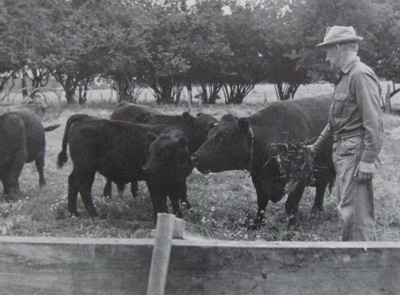
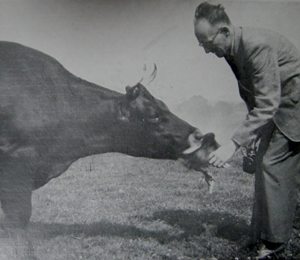
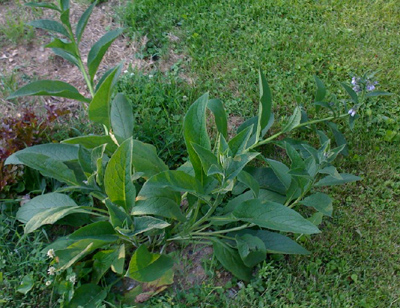
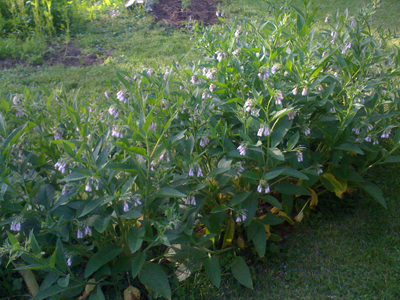 |
Farmers
Feed Comfrey to Cattle
"It might
be wise to note when observing animal studies that comfrey is used extensively
as a fodder for dairy and beef cattle throughout the Pacific Northwest with
no problems. In fact, farmers are growing fields of comfrey because of the
outstanding results in milk production and the health of the herds."
(The Comfrey Controversy by Rosemary Gladstar.)
"It will be found that cattle of all ages will always eat some wilted
Comfrey each day however good their grass, in the same way they will go
to the hedges for deep-rooting herbage, for a change and to supply minerals."
("Russian Comfrey" by Lawrence D. Hills.)
The first photo is from the book "Comfrey: Fodder, Food and Remedy" by Lawrence
D. Hills written in 1976. The man has hay with comfrey in it for his cattle.
The second photo:
" 'No stock will eat Comfrey' say those who have merely looked this crop
up in a book. Bullocks have been folded (grazed) behind an electric fence
like marrowstem kale. This cow on Mr. I.G. Macdonald's farm, grabbed it
from Lawrence D. Hill rather too fast for the camera."
-Report on Quaker Comfrey (Symphytum Peregrinum), Number One, The 1954 Research
Results by Lawrence D. Hills.
Published 1955 by The Henry Doubleday Research Association, Bocking, Braintree, Essex, England.
"I bought
a Bocking #4 Comfrey cutting from you a year ago. Down the road from me
is a farmer with horses and a small herd of cows. The cows escaped their
pasture more than one time, and seemed to like MY yard the best.... In late
summer, the cows escaped again. There were signs of the visit:
A deep hoofprint inside one of my garden boxes, several big cowpies, trampled/torn
plants, but, particularly, my big beautiful Comfrey was chomped down almost
to ground level! (You did say that livestock love to eat Comfrey!)"
"I was confident, but still a little anxious, to see what the eaten-down
comfrey stump would do after overwintering in the ground. In spring it seemed like
overnight the plant took off. I'm glad to see the plant has come back and
is branching out in different directions."
"I've already given my daughter a potted cutting from the plant, which she
promptly forgot about and, when she finally remembered it, it was dried
out, limp and looking like it was a goner. But once she planted it in the
ground, little shoots began appearing all around it." -Rick, New Bloomfield,
Pennsylvania
The third photo is Rick's comfrey plant in Pennsylvania.
The fourth photo is Rick's comfrey several years later.
"After an early Spring, followed by a chilly/frosty/rainy May, my Comfrey is suddenly in bloom already after a couple of weeks of warmer weather."
"What you see is my stand of FIVE Comfrey plants, which are the original
and 4 more that I divided off at the root, a year or two ago. The camera
doesn't do justice to how nice the lavender flowers looked, late in the
afternoon sun when I snapped the photo." -Rick
|
|
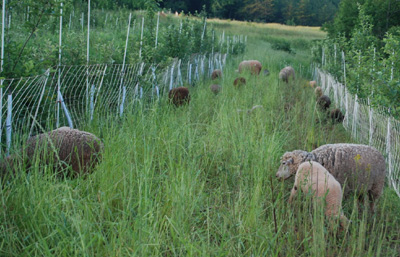
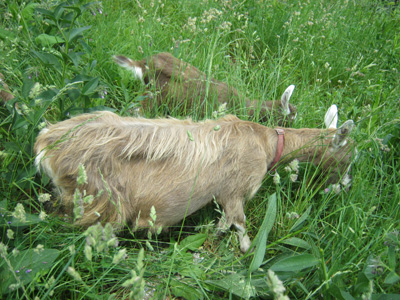
|
Forage
Fences and Rotational Grazing
Here's a
creative way to use your comfrey:
"I am building 'forage fences' with two sets of welded wire panels about
7 feet apart to separate my pastures into paddocks for rotational grazing
for dairy goats and sheep. Between the two panels (the 7í area) Iím planting
fruit/nut/pollinator attracting trees, shrubs and plants using permaculture
type guilds."
"The goats can forage through the fences, but will not be able to destroy
the trees and shrub trunks in the center. The plants can continue to grow.
Iím excited about the invasive comfrey because I want it to expand to the
outside of the fence for the animals to eat." -Kirsten, South Carolina
|
|
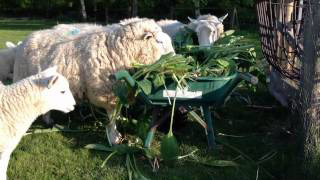
|
Sheep
Love Comfrey
"The
general practice for the crop with sheep at this period was to feed it in
early spring by scattering on the pasture to improve the milk yield of the
ewes, and again as a help in autumn fattening on poorer land. Hill sheep
also graze Comfrey very greedily, and in the early spring when the plant
is growing at a climatic advantage over the late-starting hill grasses.
(Russian Comfrey by Lawrence D. Hills.)
|
|
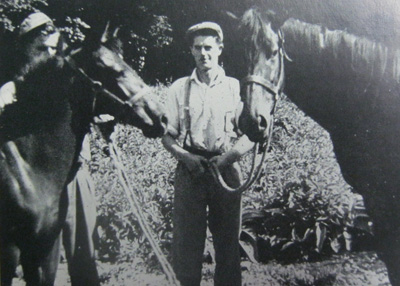
|
Comfrey,
Horses and Health
"With
the passing of the working farm horse from most holdings, the main value
of Comfrey is for racing stables and studs and riding schools."
"The greatest gain is in avoiding digestive disturbances, urinary complaints
and above all, foal scouring (diarrhea), and this benefit is incalculable.
It's use as a feed reduces the number of things that can go wrong with highly-geared
and sensitive race-horses."
("Russian Comfrey" by Lawrence D. Hills.)
"This photo is from the "Russian Comfrey" book by Lawrence D. Hills.
"The
new Comfrey starts arrived safely on Wednesday and in excellent condition.
We are planting them todayÖ right after we devise a new fence to protect
our current Comfrey because our horses have gotten to it and eaten it to
the ground, twice! Thankfully, the Comfrey springs back up in no time, but
we don't want to give all our Comfrey to our greedy horses, and we don't
want to stress the plants beyond what they can manage. The plants were beautiful,
thriving with beautiful big leaves and a beautiful green color. Today we
are reworking their protection to make them safe from the equines! ;) Of
course, we often feel all of our animals are much smarter than we are, so
we may need to keep trying to outsmart them. :) We are hoping new, multiple
strand, hot wire will do the trick." -Shelly, Norman, Oklahoma
|
|
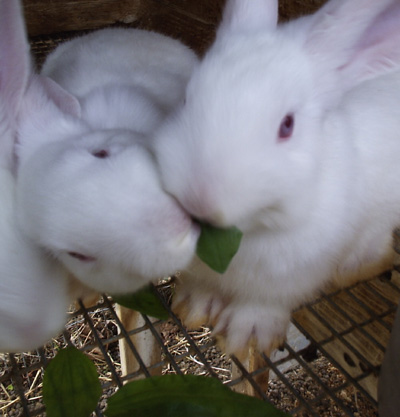
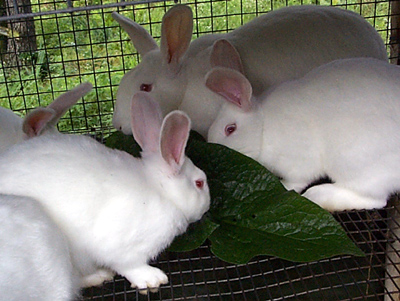
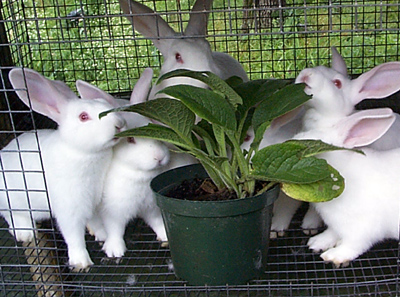 |
Rabbits
Love Comfrey
"I have been
using Comfrey as a food source and tonic for a long time in my rabbitry.
When I was young I always talked to all the old-timer rabbit breeders around
my neighborhood and on my paper route."
"They all agreed and swore by comfrey as the best rabbit tonic and said
every rabbit breeder should grow it. They would give a little each day added
to their daily green feed, and told me this is why their rabbits never got
sick."
(Rise and Shine Rabbitry, riseandshinerabbitry.com/2011/10/22/comfrey-for-rabbits)
The second and third rabbit photos are from ET in northeast Oklahoma. The
rabbits are Artex buck crossed on New Zealand White does. They are 8 weeks old.
They love comfrey leaves.
"I use my comfrey to make salves and to give to my rabbits (we have a rabbitry) for health benefits." -Tei, Wannaska, Minnesota
|
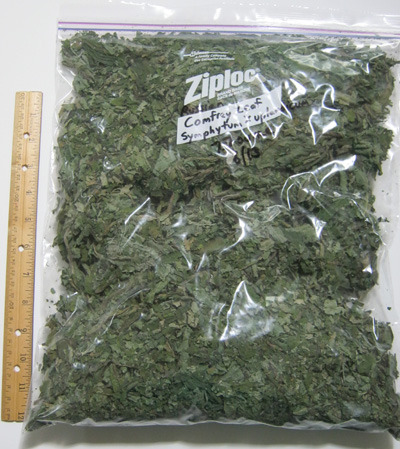 |
Comfrey
Helps Rabbits
"Thank
you so much for the comfrey! I was doing a ton of research on raising rabbits
without pellets, and comfrey is one of the best plants to feed them. It's
supposed to help prevent coccidia. I plan on feeding it all summer long,
as well as drying some to add to my winter hay. I'm looking forward to getting
my rabbit garden started." -Diane, Hanover, Pennsylvania
This photo is Russian Comfrey leaf I dried to use in the winter.
|
|
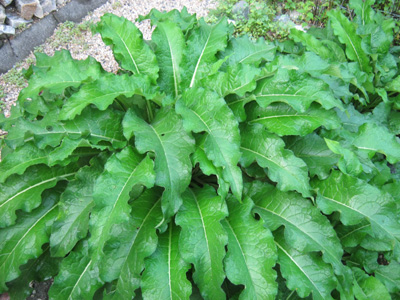 |
Comfrey
and Vitamin B12
All
comfrey contains vitamin B12, one of the few plants to have it. Most vitamin
B12 is found in animal products such as liver, eggs and milk.
Leaves of Bocking #14 have 4.4 nanograms of B12 per gram. Bocking #4 has
11.6 per gram (more than double #4). Dried yeast has 1.1 per gram.
Comfrey has good nutrition for poultry and livestock. As with all feed and
medicine, stay in touch with your veterinarian or animal specialist for
advice.
|
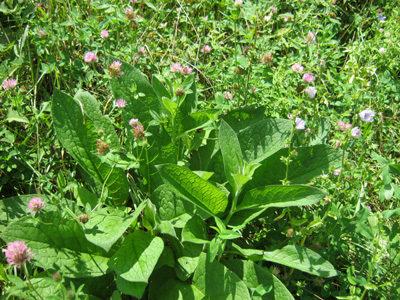 |
Comfrey
For the Small Farm
"Comfrey
is of perhaps the most immediate advantage on the holding with a few goats,
a pig and some chickens and no paid labour. Once planted its cultivation
needs few implements and takes little time, and the small area is no worry
to the man whose farm is under five acres."
("Russian Comfrey" book by Lawrence D. Hills.)
Stay in touch with your veterinarian or herbalist about using comfrey.
|
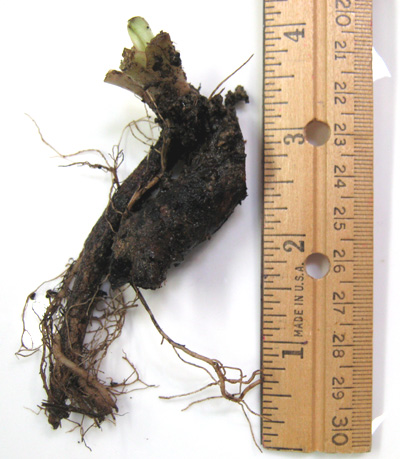
|
Buy Live
Comfrey Roots for Planting
Grow
your own Comfrey: True/Common Comfrey, Russian Bocking #4, Russian Bocking
#14, Symphytum Hidcote Blue.
Your order includes a flyer about how to take care of your plants.
Comfrey
Easy Order Page
|
| |
|



















